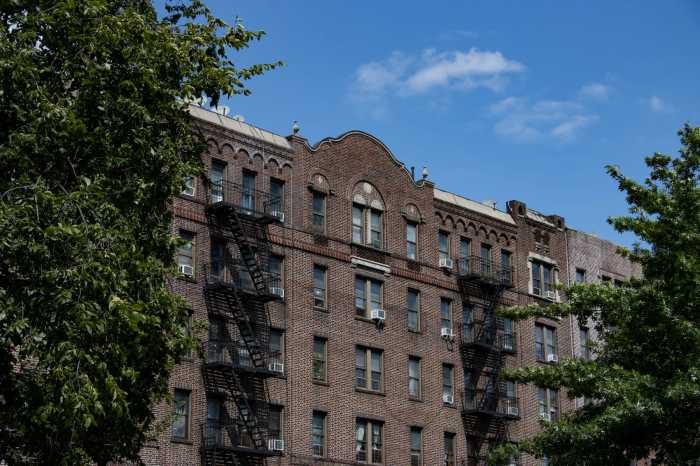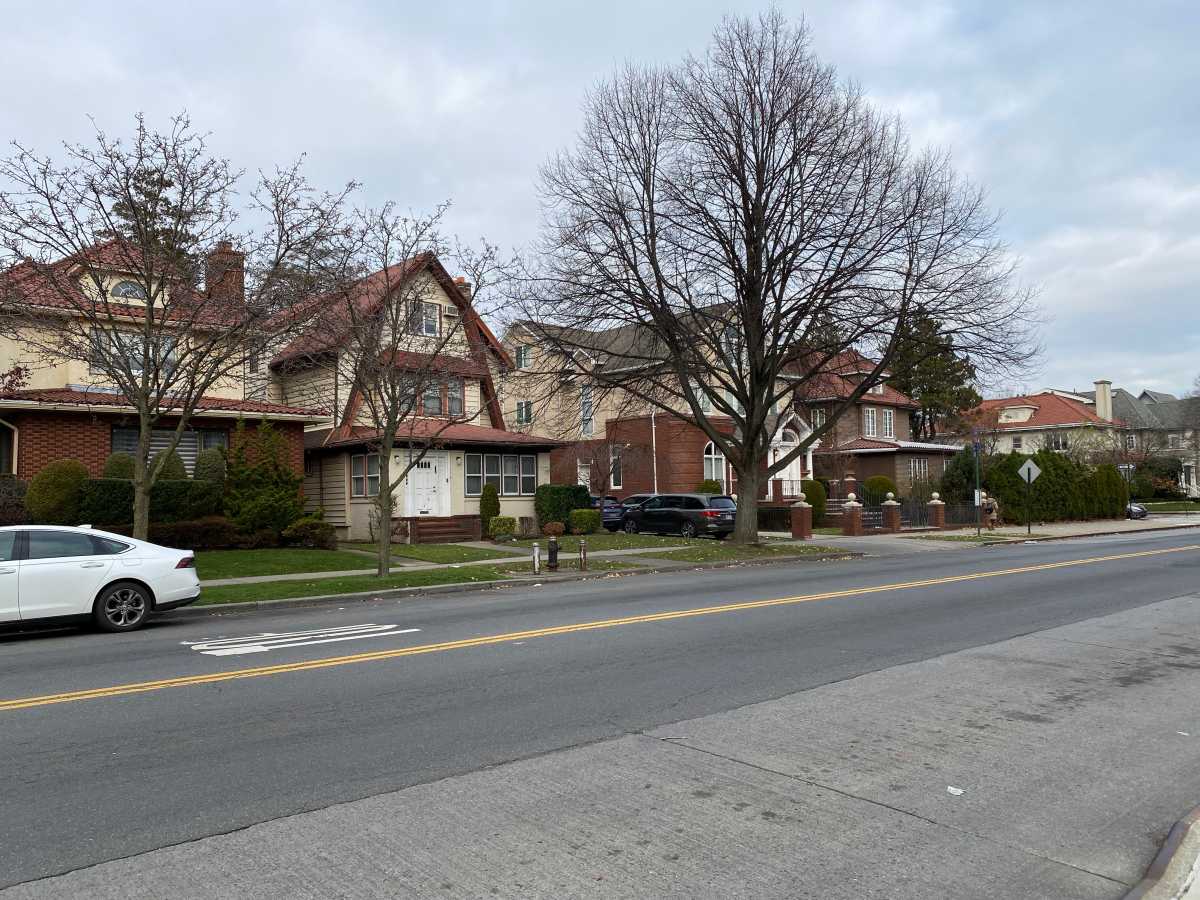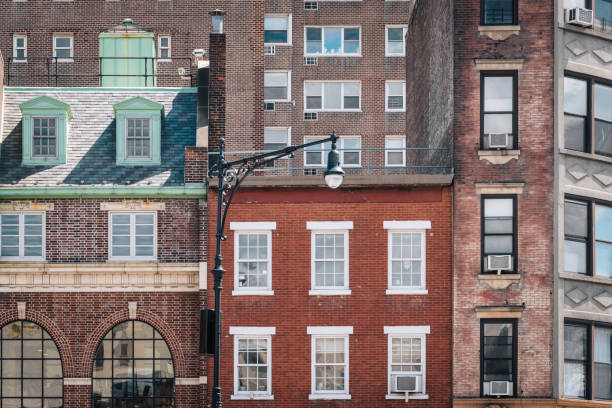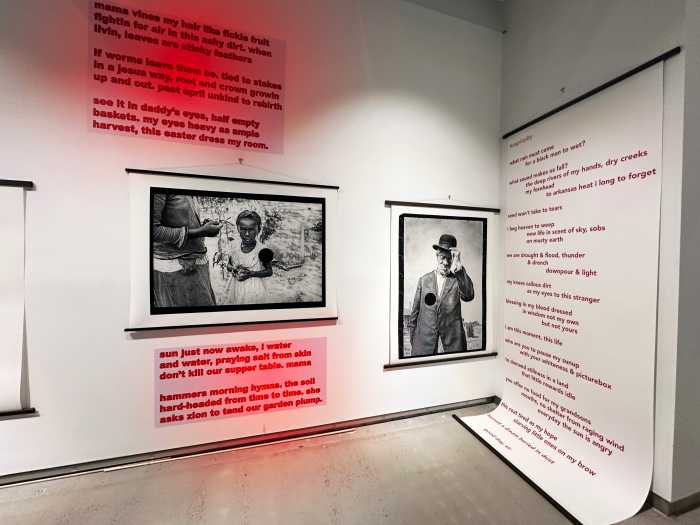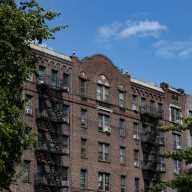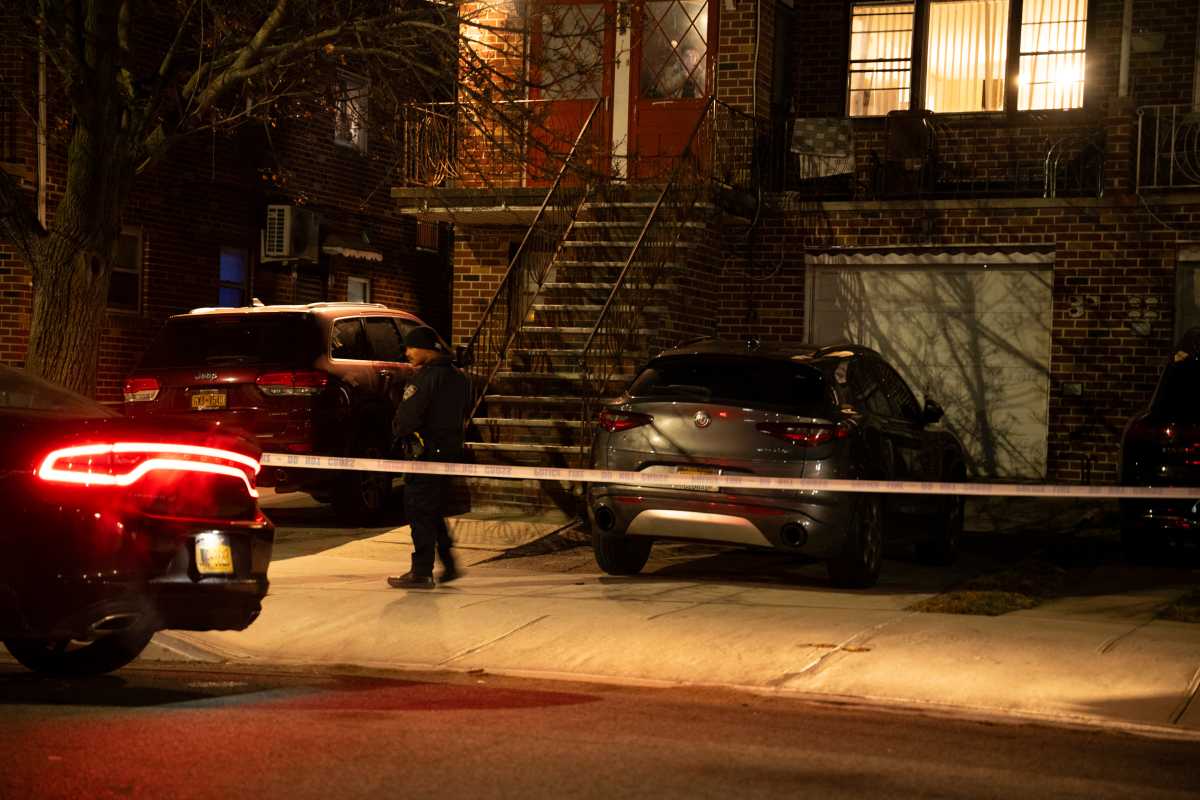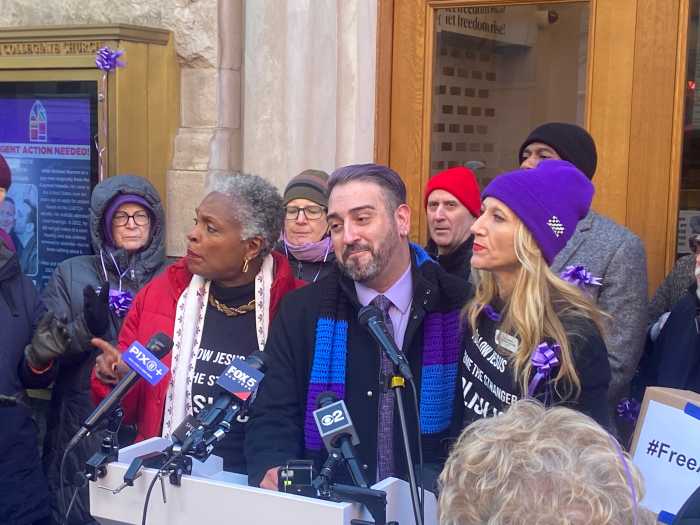The affordable and market-rate housing component in plans for the Atlantic
Yards arena complex will likely expand by 1,300 units, a Forest City Ratner
executive told The Brooklyn Papers this week.
The development company’s principal owner, Bruce Ratner, proposes
to build a $2.5 billion complex that would include a basketball arena
for his New Jersey Nets. The original plans also called for 17 buildings
including four office skyscrapers and 13 apartment and commercial buildings.
By turning three of the four skyscrapers that surround the arena —
at the intersection of Atlantic and Flatbush avenues — from office
buildings into apartment high-rises, the official said the company could
realize its goal of increasing the housing stock in Brooklyn while providing
residential buildings in the first phase of construction and therefore
become an immediately visible presence in the community.
“This is a very revolutionary thing we’re doing,” the Forest
City Ratner executive told The Papers.
The additional housing would eliminate 1,502,889 square feet of office
and commercial space from Atlantic Yards, the executive said, but would
help the company speed up the process of building and occupying the properties.
One of the four towers around the arena, all of which are being designed
by architect Frank Gehry, would remain for office space.
If the buildings stayed commercial, the source said, Forest City Ratner
would need to wait until substantial anchor tenants — generally large
Manhattan corporations hoping to move back-offices to Brooklyn —
agreed to lease the space before starting construction.
That, and subsidies from the city and state, are how Ratner’s Metrotech
office buildings were filled.
A commercial site being switched to residential in the planning stages
shouldn’t be looked on as a surprise in the still-evolving Downtown
Brooklyn area, said Michael Burke, director of the Downtown Brooklyn Council.
“It’s not unexpected,” he said, adding that he didn’t
think the shift by Ratner indicated a floundering market for downtown
office space. “Residential development is an easier thing to do;
certainly we’re in a market right now where residential is booming
— it’s very hot.
“With Atlantic Yards, even if Forest City reduces the amount of commercial
space, it still provides the business world with more options,” Burke
said. “Even if they have only one tower as opposed to four.”
Over the past several months, Forest City Ratner has been working in conjunction
with the New York City chapter of the Association of Community Organizations
for Reform Now (ACORN), to establish an affordable housing scheme for
Atlantic Yards. The developer initially proposed 4,500 units of housing,
all to be built after the arena and office towers, largely between Carlton
and Vanderbilt avenues, from Atlantic Avenue to Dean Street in Prospect
Heights.
In October, following an investigation by The Brooklyn Papers, ACORN announced
that Ratner’s company had agreed to implement a three-tiered approach
to create affordable housing in the plans, and Forest City Ratner officials
assured that 50 percent of all the new housing units would be devoted
to housing for senior citizens and varying levels of affordable housing,
all below market rate.
Bertha Lewis, executive director of New York ACORN, said the devised scheme
covered households making everywhere from 40 percent to 140 percent of
the area median income, which translates to $17,000 to $100,000.
Though the Ratner executive said this week that affordable units would
be interspersed with the luxury and market-rate units, and all buildings
would feature doormen, laundry machines and roof gardens, Lewis was hesitant
to guess what the increased number of housing units might mean for her
organization, which will presumably be the lead non-profit agency to administer
the affordable housing portion of the development.
“Talk is cheap,” Lewis said of the Ratner executive’s announcement.
“Here’s what we know — right now we know that what’s
guaranteed is 4,500 [units]. That’s what we know, that’s what
we’ve been working on.”
Early talk about negotiations the group had with Forest City Ratner boasted
that the complex would also feature affordable units for purchase, such
as co-ops or condos. Lewis said that so far, she had not received any
promises on that front.
“Anytime we can get a commitment to more housing, that’s fine,”
Lewis clarified. “But right now we’re working on what we know.
I’m not going to speculate on some pie in the sky.”
Said the Forest City Ratner executive, “We like working with ACORN.
They have that radical feeling, they really fight for what they believe
in. We just love their history, how they started, and feel it really represents
what we’re working to do here.”
To build Atlantic Yards, Ratner may need the state to condemn 11 acres
of private property under eminent domain and to negotiate with the Metropolitan
Transportation Authority for air rights to develop over the 11-acre Long
Island Rail Road yards. The potential condemnations, which affect both
residential and commercial tenants and property owners, have been the
major factor in more than a year of protests against the plan.
Councilwoman Letitia James, a vocal opponent of the project, whose district
includes Fort Greene, Clinton Hill and the part of Prospect Heights where
most of Atlantic Yards would sit, was cynical when told of the additional
housing.
“I mean, obviously, if they’re going to get to the 50 percent
[affordable] they’ve got to do more luxury housing,” she said,
referring to the kind of cross-subsidizing that is common in mixed-income
projects. Still, she said, nothing was finalized.
“I know nothing about the [1,300] new units; it’s just a rumor,
it has nothing verified,” said James. “But obviously I hope
we can achieve the 50-percent affordable housing model — that is
absolutely critical.”
The councilwoman added that until she sees a “signed document”
she refuses to call the Atlantic Yards project a done deal, though she
admits to “inquiring every day” to the city’s Department
of Housing Preservation and Development.
“I have spoken with HPD, and I know they are talking,” she added.
Carol Abrams, an HPD spokeswoman, confirmed talks with Forest City Ratner.
“We’ve been having discussions with Forest City Ratner Companies
and ACORN, on how to shape an affordable housing program that makes sense,
that meets their needs and operates within the structure of our current
programs,” Abrams said.
She added that it was a general condition among buildings with part-market,
part-subsidized housing that the market units balance out the costs of
providing affordable units.
“Cross-subsidies, where the market-rate units are helping to subsidize
the other, non-market rate units, is the most common,” Abrams said,
but added that “operational responsibility for marketing the low-income
units was usually delegated to the affiliate non-profit.”


